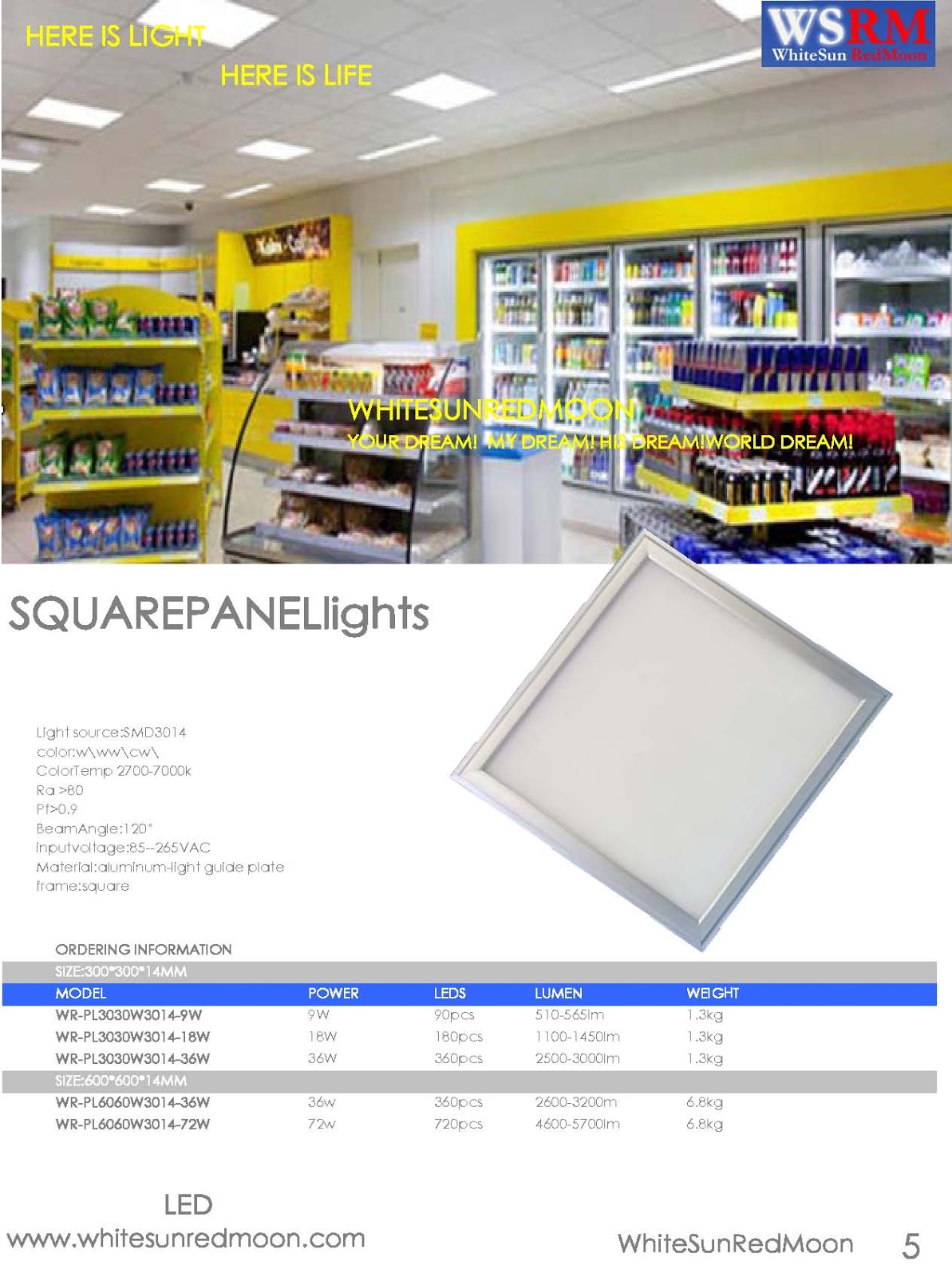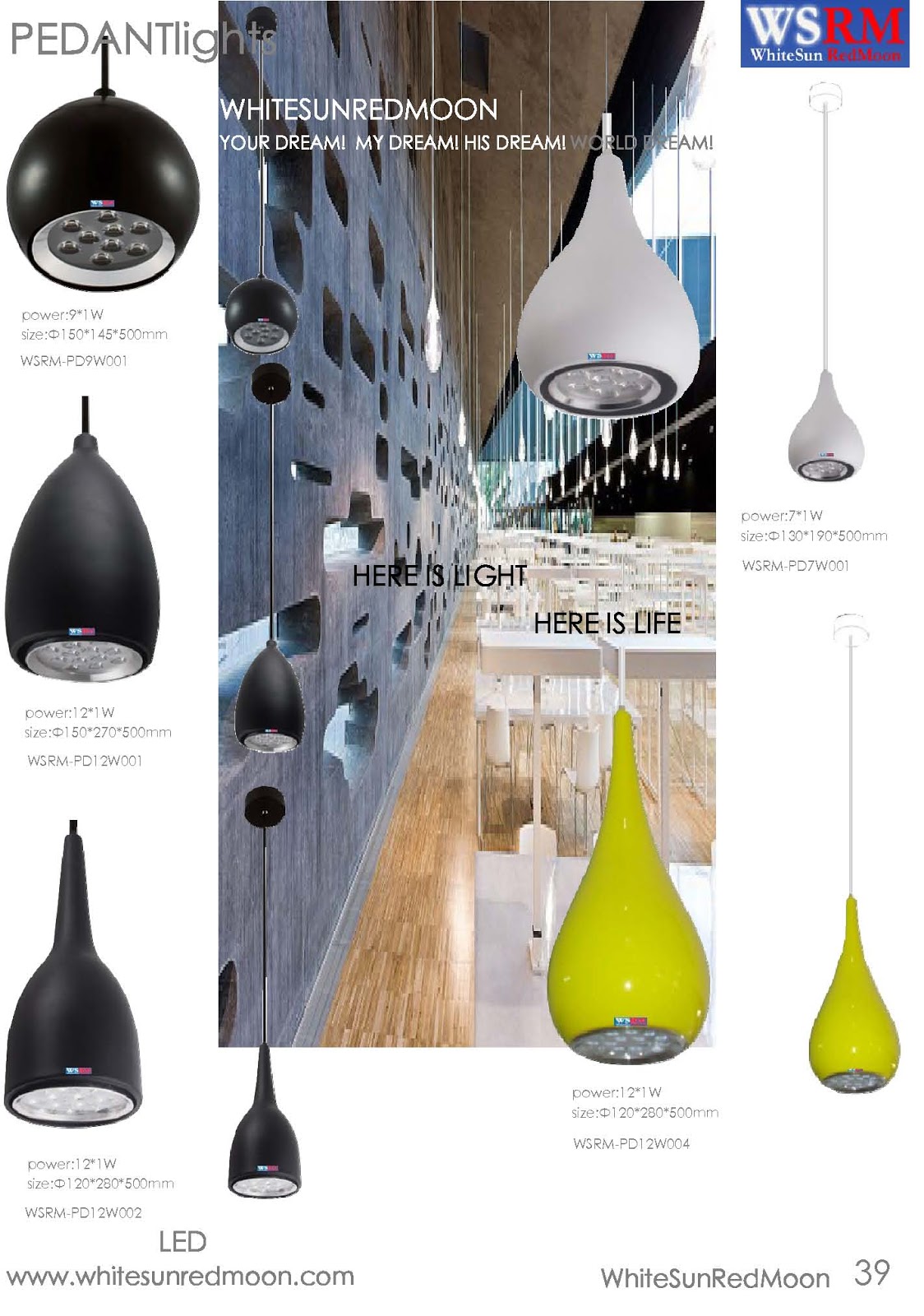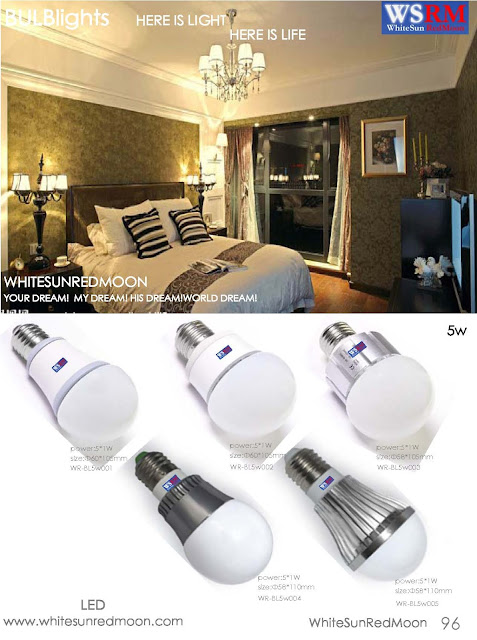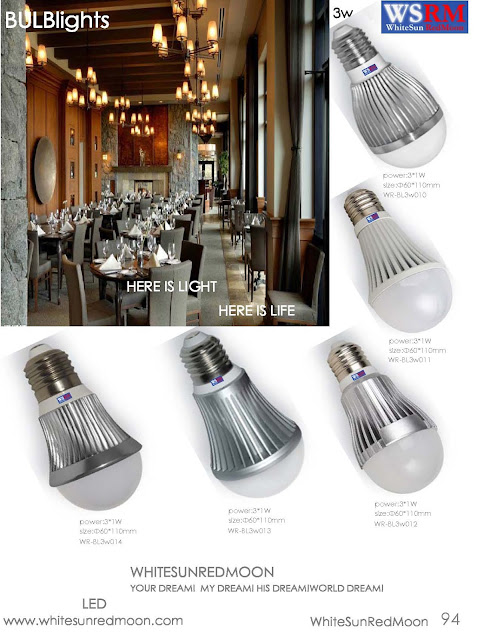HERE IS LIGHT!HERE IS LIFE!
www.whitesunredmoon.com
WSRM---How to Calculate Energy Savings of Incandescent Lights Vs. LED ?
LED (light-emitting diode) lights can save you significant amounts of money, while helping to save the environment. LED lights offer a zero-maintenance lighting alternative that provides equivalent illumination to incandescent bulbs, with environmentally safe components, at a lower wattage. LED lights also emit considerably less heat than their incandescent counterparts and last longer, which saves replacement costs and inconvenience.
Instructions
- 1Estimate the average number of hours per day you have any particular bulb on.
- 2Decide how many incandescent bulbs you will be replacing with LED lights. Also, note the wattages of the incandescent bulbs.
- 3Find out your cost per kilowatt-hour from your electric company. This figure should be on your electric bill, or you can call the electric company.
- 4Calculate the daily cost of the incandescent bulbs using the following formula:Cost(incandescent) = [(hours per bulb x number of bulbs x wattage per bulb) / 1,000] x Cost per kilowatt-hourAs an example, say you replaced eight, 60-watt bulbs, that are turned on eight hours per day, with electricity costs 12 cents per kilowatt-hour:Cost(incandescent) = [(8 hours/bulb x 8 bulbs x 60 watts) / 1,000] x $.12/kw-hrCost(incandescent) = 3.84 kw-hr x $.12/kw-hrCost(incandescent) = $.46/dayTo calculate the expense on a yearly basis, multiply that figure by 365, for a yearly cost of $167.90
- 5Perform the same calculation as in Step 4, except use the LED light's equivalent wattage. For a 60 watt incandescent bulb, the LED wattage equivalent would be six watts:Cost(LED) = [(hours per bulb x number of bulbs x wattage per bulb) / 1,000] x Cost per kilowatt-hourCost(LED) = [(8 hours/bulb x 8 bulbs x 6 watts) / 1,000] x $.12/kw-hrCost(LED) = 0.384 kw-hr x $.12/kw-hrCost(LED) = $.046/dayTo calculate the expense on a yearly basis, multiply that figure by 365, such that the yearly cost is $16.79
- 6Subtract the yearly cost of each bulb to calculate total yearly energy savings:Yearly Savings = Yearly Cost(incandescent) - Yearly Cost(LED)Yearly Savings = $167.90 - $16.79Yearly Savings = $151.11
WE HAVE A DREAM:BRING OUR LEDlights TO THE WORLDWIDE!
www.whitesunredmoon.com
http://zgledn.yglm.mobi/SALES CONTACTITALYTorino
39011redmoon1@myledonline.com
Rome
3906whitesun1@myledonline.com
SPAIN
Barcelona
3493redmoon1@myledonline.com
GERMANY
Berlin
4930whitesun1@myledonline.com
FRANCE
Paris
331redmoon1@myledonline.com
ENGLAND
London
4420whitesun1@myledonline.com
RUSSIA
Moscow
7499redmoon1@myledonline.com
FINLAND
Helsinki
3589whitesun1@myledonline.com
NORWAY
Oslo
47whitesun1@myledonline.com
AUSTRIA
Vienna
431whitesun1@myledonline.comNETHERLANDAmsterdam3120whitesun1@myledonline.com
SWITZERLAND
Zurich
4144whitesun1@myledonline.com
TURKEY
Istanbul
90216whitesun1@myledonline.com
BELGIUM
Brussels
322whitesun1@myledonline.com
SWEDEN
Stockholm
468whitesun1@myledonline.com
HUNGARY
Budapest
361whitesun1@myledonline.com
SCOTLAND
Glasgow
44141whitesun1@myledonline.com
ICELAND
Reykjavik
354whitesun1@myledonline.com
- 1













